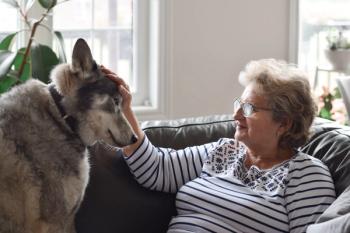
AAHA says veterinary hospitals can grow revenue despite economy
Data suggests focusing on clients and preventive care could bring profession an additional $350 million.
The American Animal Hospital Association (AAHA) says the economy is no longer an excuse for underperforming veterinary hospitals. As stated in the organization’s State of the Industry address presented at the AAHA Yearly Conference this March in Phoenix, veterinary hospital growth is rooted in client relationships--not hospital size, geographic location or the economy.
Data was gathered in a study by AAHA and IDEXX Laboratories from hospitals that demonstrated year-over-year revenue growth greater than 10 percent--along with those with declining revenue--to understand what factors led to success. The results showed that the single most important factor differentiating the successful from the failing practice was a focus on strong, lasting client relationships. “Overall, hospitals in this study that focused on building strong client relationships were more than twice as likely to be “Growers” versus “Decliners,” says Communications Manager Kate Spencer in an AAHA release.
Overall, data showed an average growth of 5.6 percent in hospital revenue for the profession from 2011 to 2012, and approximately 25 percent of hospitals achieved year-over-year growth greater than 10 percent in spite of the economic downturn and other challenges. The AAHA State of the Industry address highlighted five factors the organization believes are critical for growth:
• focusing on clients
• driving preventive care
• leveraging technology to drive preventive care
• setting goals and measuring business
• communicating the value of higher standards.
“It is clear from the data that the first key to growth is focusing on strengthening your client relationships,” says Michael Cavanaugh, DVM, DABVP, AAHA’s executive director. “For years, AAHA has focused on the importance of moving from a ‘veterinarian-centered practice’ to a ‘client-centered practice.’ This data shows that a client-centric approach to veterinary medicine is key to success.”
In the State of the Industry study, both Growers and Decliners were asked what they believed was most important to determine revenue growth. “Top responses from Growers all focused on their clients, including how they built their local reputation through client referrals and how they communicated with their clients,” the AAHA release states. “Growers demonstrated they could grow revenue whether or not the local economy was strong.” Decliners, on the other hand, focused on medical services and the health of the economy.
Another key factor in growth is securing regular preventive care visits, the study found. Growers send reminders, provide pre-visit education content to clients and provide clear evidence of the value of preventive care by communicating throughout the physical examination and sharing post-visit report cards and diagnostic results. AAHA also believes “forward booking” is essential for driving preventive care visits and client compliance. Its data shows that only 5 percent of preventive care visits are forward booked at veterinary hospitals. According to AAHA and IDEXX, increasing forward-booking appointments to 10 percent could generate approximately $350 million in additional preventive care revenue for the veterinary profession.
“When forward booking is combined with an effective automated client communication and reminder strategy, the estimated impact grows to $450 million,” the AAHA release states. “That same estimate approaches $1 billion under the assumption that having patients coming in for regular preventive care visits drives opportunities for additional visits such as dental cleaning.” AAHA says those estimates translate into $40,000 in additional revenue, or 3 percent additional growth, for the average hospital.
The data suggests that it’s an easy conclusion for veterinary hospitals to focus on what the team can control, like its client relationships, instead of an economy it can’t. “These findings make sense--it is the client that makes the decision to bring the pet in, it is the client that has to pay the bill, and it is the client that has to comply with the recommendations,” Cavanaugh says. “What’s most important for growth is the ability of the veterinary team to communicate the value of the services in language that the client can understand.”
Newsletter
From exam room tips to practice management insights, get trusted veterinary news delivered straight to your inbox—subscribe to dvm360.






